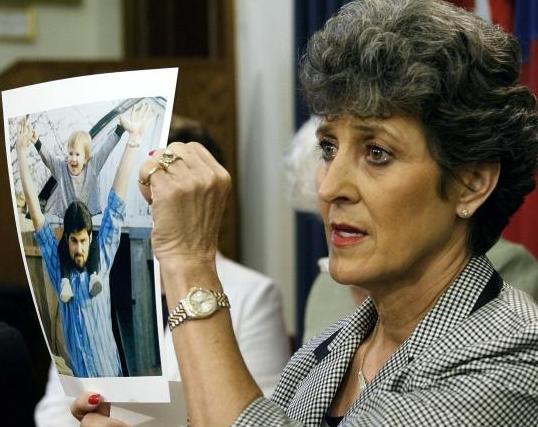
The fire that killed Cameron Todd Willingham’s three daughters in 1991, a tragedy for which he was found guilty and executed by lethal injection under Texas Gov. Rick Perry’s watch, was not a case of arson but the result of an accidental fire. This is according to the Beyler Report, commissioned by the Texas Forensic Science Commission. This report confirms what several of the country’s leading fire experts have already found: the prosecution’s case relied not on science-based evidence, but instead on the testimony of expert witnesses whose methods resembled more those of psychics than specialists in the study of arson.
However, the Texas Forensic Science Commission is not being allowed to present these findings to the public in its official capacity. Recently, Perry replaced four members of the panel, stymieing the commission’s business. Although he denies any political motive, by manipulating the composition of the panel Perry is stalling what will likely be the unprecedented announcement, namely that the state of Texas killed an innocent man.
Surely, Perry saw this coming. On Feb. 14, three days before Willingham was scheduled to be executed, his attorney asked the governor to postpone the execution; newly-obtained expert evidence showed that Cameron did not kill his daughters. On the day of the execution, the governor was faxed a five-page report detailing the evidence. The guilty verdict in doubt, Perry went ahead with the execution as scheduled.
With alarming frequency, individuals are released from prison when review finds fault with the evidence convicting them, incompetent attorneys, prosecutorial misconduct, or new evidence showing the condemned could not have committed the crime for which they have been convicted. To date, nearly 250 individuals have been exonerated by DNA evidence alone. According to the Sentencing Project, 15 percent of those freed by DNA were imprisoned on the false testimony of jailhouse informants (a key piece in the case against Willingham was the testimony of an unreliable jailhouse snitch).
When the innocent are wrongly convicted of murder and sentenced to prison, the state can correct the error by freeing them and clearing their name. To be sure, liberated individuals have lost a great deal of their lives behind bars for no good reason. But those released from prison have two things the executed do not have: more life to live and the knowledge that their claims of innocent have been vindicated. The number of guilty verdicts overturned by careful review of capital cases tells us that the system does not work with the certainty required by reason to justify a sentence that cannot be reversed once carried out.
Fallibility of the system is not the only problem with capital punishment. The system discriminates against the poor and minority offender. Those of higher socioeconomic status are less likely than the poor to be convicted and sentenced to prison. White men are less likely than black and Hispanic men to be convicted and sentenced to prison for the same crimes.
Earlier this year, Michael Radelet and Traci Lacock of the University of Colorado published a survey that found that 88 percent of leaders in the field of criminology do not believe the death penalty is an effective deterrent when compared to long-term imprisonment. Indeed, the evidence suggests that the death penalty promotes extra-legal homicide, what researchers call the “brutalization effect.” Murder rates are lower in states without the death penalty, and murder rates tend to fall following discontinuation or abolition of the death penalty. The South carries out over eighty percent of the executions in the U.S., yet it has the highest murder rate of any region. States that kill sanction lethal retribution as a proper method for settling disputes, thereby setting a bad example for its citizens.
Incapacitation via death is not a viable argument in the penalty’s favor when less onerous alternatives exist. The risk of escape by prisoners from maximum security facilities is near zero; the death penalty is unnecessary to protect society from the convicted.
The cost of maintaining the death penalty is staggering. According to the Atlanta Journal-Constitution, the 2008 murder conviction of Brian Nichols in Georgia cost the state $2.3 million and Fulton County three-quarters of a million dollars. Another $300,000 was spent for state-supplied staff and other expenses. The defense bill came to $463,000. In the end, the jury sentenced Nichols to life in prison without parole. All that money spent when the effective verdict could have been obtained for a fraction of the cost.
We can salvage something from Cameron Todd Willingham’s death. If we act to join reason with justice, we can mark his case as the beginning of the end of the death penalty in America.
Photo: Willingham’s cousin holds a picture of him with his child. AP









